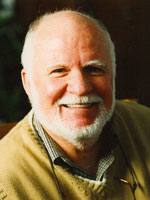
A landscape is the visible features of an area of land, its landforms, and how they integrate with natural or human-made features, often considered in terms of their aesthetic appeal. A landscape includes the physical elements of geophysically defined landforms such as mountains, hills, water bodies such as rivers, lakes, ponds and the sea, living elements of land cover including indigenous vegetation, human elements including different forms of land use, buildings, and structures, and transitory elements such as lighting and weather conditions. Combining both their physical origins and the cultural overlay of human presence, often created over millennia, landscapes reflect a living synthesis of people and place that is vital to local and national identity.

Landscape ecology is the science of studying and improving relationships between ecological processes in the environment and particular ecosystems. This is done within a variety of landscape scales, development spatial patterns, and organizational levels of research and policy. Concisely, landscape ecology can be described as the science of "landscape diversity" as the synergetic result of biodiversity and geodiversity.
An environmental factor, ecological factor or eco factor is any factor, abiotic or biotic, that influences living organisms. Abiotic factors include ambient temperature, amount of sunlight, air, soil, water and pH of the water soil in which an organism lives. Biotic factors would include the availability of food organisms and the presence of biological specificity, competitors, predators, and parasites.
Carl Ortwin Sauer was an American geographer. Sauer was a professor of geography at the University of California at Berkeley from 1923 until becoming professor emeritus in 1957. He has been called "the dean of American historical geography" and he was instrumental in the early development of the geography graduate school at Berkeley. One of his best known works was Agricultural Origins and Dispersals (1952). In 1927, Carl Sauer wrote the article "Recent Developments in Cultural Geography," which considered how cultural landscapes are made up of "the forms superimposed on the physical landscape."

Historical ecology is a research program that focuses on the interactions between humans and their environment over long-term periods of time, typically over the course of centuries. In order to carry out this work, historical ecologists synthesize long-series data collected by practitioners in diverse fields. Rather than concentrating on one specific event, historical ecology aims to study and understand this interaction across both time and space in order to gain a full understanding of its cumulative effects. Through this interplay, humans adapt to and shape the environment, continuously contributing to landscape transformation. Historical ecologists recognize that humans have had world-wide influences, impact landscape in dissimilar ways which increase or decrease species diversity, and that a holistic perspective is critical to be able to understand that system.
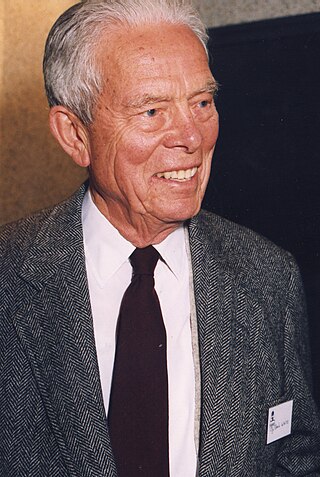
Gilbert Fowler White was a prominent American geographer, sometimes termed the "father of floodplain management" and the "leading environmental geographer of the 20th century". White is known predominantly for his work on natural hazards, particularly flooding, and the importance of sound water management in contemporary society.

Doreen Barbara Massey was a British social scientist and geographer. She specialized in Marxist geography, feminist geography, and cultural geography, as well as other topics. She was Professor of Geography at the Open University.
Robert W. Kates was an American geographer and independent scholar in Trenton, Maine, and University Professor (Emeritus) at Brown University.
Anthony Bebbington is a geographer, International Director for Natural Resources and Climate Change at the Ford Foundation and Higgins Professor of Environment and Society in the Graduate School of Geography, Clark University, USA. He was previously ARC Laureate Professor at the School of Geography, University of Melbourne, Australia (2016-2019).
Yehua Dennis Wei is a Chinese-American geographer. He is a professor in the Department of Geography and a senior scholar in the Institute of Public and International Affairs at the University of Utah. His research has been funded by the NSF, Lincoln Institute of Land Policy, National Geographic Society, Ford Foundation and Natural Science Foundation of China (NSFC). He has received awards for research excellence from the NSFC, Association of American Geographers' (AAG) China, Asian and Regional Development and Planning Specialty Groups, and University of Wisconsin-Milwaukee.
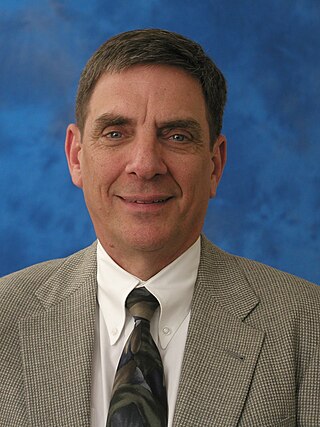
William E. Doolittle is an American geographer who is prominent among the fourth generation of the Berkeley School of Latin Americanist Geography. He is currently the Erich W. Zimmermann Regents Professor in Geography at the Department of Geography and the Environment at University of Texas at Austin. He specializes in landscapes and agricultural technology in the American Southwest and Mexico.
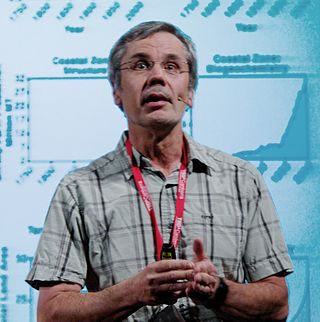
William Lee Steffen was an American-born Australian chemist. He was the executive director of the Australian National University (ANU) Climate Change Institute and a member of the Australian Climate Commission until its dissolution in September 2013. From 1998 to 2004, he was the executive director of the International Geosphere-Biosphere Programme, a coordinating body of national environmental change organisations based in Stockholm. Steffen was one of the founding climate councillors of the Climate Council, with whom he frequently co-authored reports, and spoke in the media on issues relating to climate change and renewable energy.
Michael Mortimore was a British geographer and a prolific researcher of issues in the African drylands. He was an academic in Nigerian universities for over 25 years. He ran a British research consultancy, Drylands Research. He is best known for an anti-Malthusian account of population-environment relationships, More People, Less Erosion, and field-based studies of adaptation to drought.
J. Richard Peet is a retired professor of human geography at the Graduate School of Geography at Clark University in Worcester MA, USA. Peet received a BSc (Economics) from the London School of Economics, an M.A. from the University of British Columbia, and moved to the USA in the mid-1960s to complete a PhD in Geography from the University of California, Berkeley. He began teaching at Clark University shortly after completing his PhD from Berkeley, remained there for over 50 years, with secondments in Australia, Sweden and New Zealand.
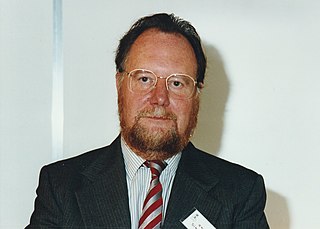
Ian Gordon Simmons is a British geographer. He retired as Professor of Geography from the University of Durham in 2001. He has made significant contributions to environmental history and prehistoric archaeology.
Harold Chillingworth Brookfield was a British and Australian geographer specialising in the analysis of rural development, small-scale societies, family farming, and the relationship between land use and society in developing countries. He retired from the Australian National University in 1991.

Lesley Head is an Australian geographer specialising in human-environment relations. She is active in geographical debates about the relationship between humans and nature, using concepts and analytical methods from physical geography, archaeology and cultural geography. She retired from the University of Melbourne in 2021.
Jiquan Chen is a landscape ecologist, primarily focused on nutrient flux, carbon cycling, bioenergy, and grassland ecology. He currently leads the LEES lab at Michigan State University.

Land change science refers to the interdisciplinary study of changes in climate, land use, and land cover. Land change science specifically seeks to evaluate patterns, processes, and consequences in changes in land use and cover over time. The purpose of land change science is to contribute to existing knowledge of climate change and to the development of sustainable resource management and land use policy. The field is informed by a number of related disciplines, such as remote sensing, landscape ecology, and political ecology, and uses a broad range of methods to evaluate the patterns and processes that underlie land cover change. Land change science addresses land use as a coupled human-environment system to understand the impacts of interconnected environmental and social issues, including deforestation and urbanization.

Simon Batterbury is a British-Australian geographer, Professor of Environmental Studies at the University of Melbourne, Australia and a visiting professor at Lancaster University, UK.
